
views
Soaking With Bleach

Add your shirt to a bucket of cold water. Use laundry bleach. To begin, toss your shirt in a bucket, bowl, or other suitably sturdy container. Cover it with at least a few inches of cold water. Feel free to soak other whites with your shirt. It is more efficient to bleach a number of items than just one. White underwear, socks, pillowcases, and towels often are good candidates. If you do, add extra water so that the clothes have at least an inch or so of water over them when pushed down. You want a container big enough to give you room to stir and agitate your clothing while it soaks. Clean construction-grade buckets are great for this. If you can obtain one with a lid, it will help prevent accidents as well as cut down on any fumes if used inside. Other typical possibilities include a large cooking pot, a bathtub, or your washing machine.
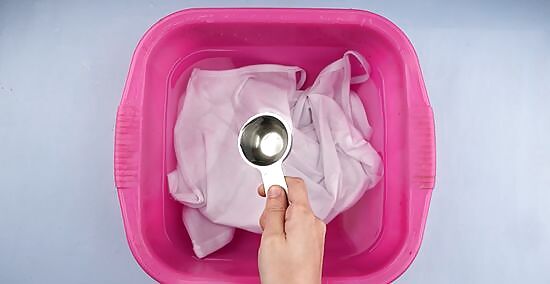
Add bleach. Your bottle of bleach very likely has directions on how much is recommended for use. Different bleaches have different concentrations. If you are only soaking your shirt, you may only need a few tablespoons or so. However, if you soak a large load of whites, you may need to add up to 1 cup. Generally, about 1/4 cup of bleach per gallon of water is recommended. If your cloth is soiled, rather than just needing whitening, you may also want to add other cleaning agents for extra cleaning power! Just a few other materials you may want to add are: Laundry detergent Dish detergent Borax Washing soda Note: Never mix bleach and ammonia — this can release toxic chloramine gas.
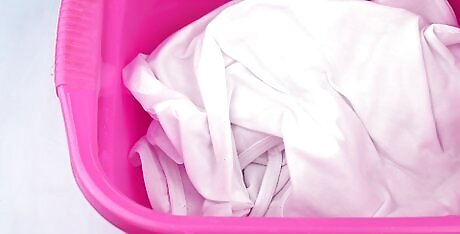
Let the shirt soak for 5-10 minutes. Next, stir the liquid in the bucket to ensure your shirt (and/or any other clothes with it) get a nice, even soaking. Then, set a timer for five to ten minutes and simply wait for the bleach to do its work! You may want to stir every few minutes to ensure the shirt soaks completely. Do not let your whites to soak for too long. Even fabrics that can safely be bleached, like cotton and linen, will eventually be weakened and damaged if exposed to bleach for long periods of time.
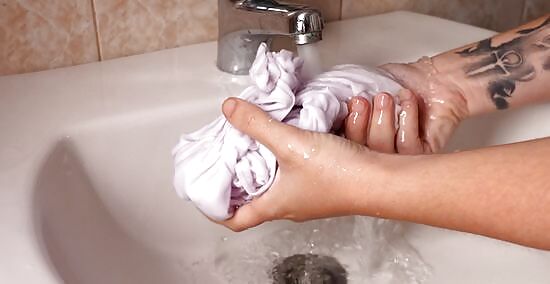
Rinse the shirt in cold water. Once your shirt has soaked, remove it from the bleach mixture and wash it under cold, clear running water. You want to do this to remove the bleach and other chemicals from the fabric. If allowed to dry, these materials can leave unpleasant residues in the fabric which can smell strongly of chlorine, irritate the skin, and possibly cause yellow stains..
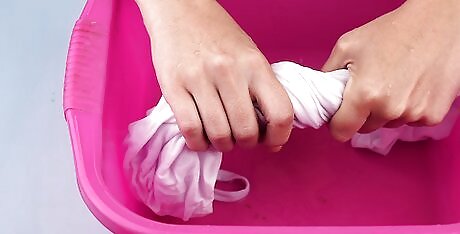
Wring the shirt out and dry. Once your shirt has been rinsed and any bleach or detergent that was used to clean it has been removed, squeeze or wring any excess water out of it. Then, simply dry it however you normally would. For most, the simplest option will be to simply use a drying machine or put out on the line to dry as usual. However, you can also let the shirt air-dry out doors. Drying white clothes in the sun is actually known to have a slight "bleaching" effect, leading to whiter whites (see section below for more information). It is not as dramatic as using bleach, but sunlight does cause bleaching.
Using Bleach With a Washing Machine
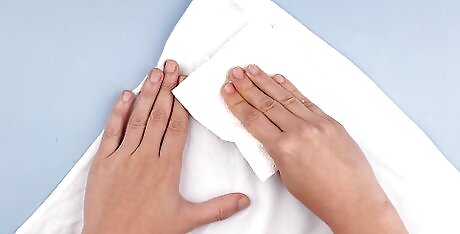
Remove any staining substances immediately. The method above isn't the only way to bleach a white shirt — you can also use bleach during a normal cycle of your washing machine to whiten your clothing with minimal extra effort. To begin, if your shirt has any stains on it, use a paper towel, a spoon, or any other tool you have handy to remove any excess spilled material from the shirt. The earlier you can remove the sources of your stains, the better the shirt will look in the long run. For ground-in stains, try making a paste of baking soda and water and brushing it into the stain. The baking soda should gradually absorb some of the staining materials, after which it can be brushed away.

Pre-treat stains with detergent. Next, pour a tiny spot of liquid laundry detergent directly onto any stain remaining on your shirt. Use a soft-bristled toothbrush (one you don't intend to use for your teeth again) to scrub the stain clean. Leave the scrubbed-in detergent in the shirt before you wash it — allowing it to set helps loosen up the stain, leaving you with a whiter shirt in the long run. If you don't have liquid laundry detergent, you can mix a small spoonful of powdered detergent with water and use it in precisely the same way.
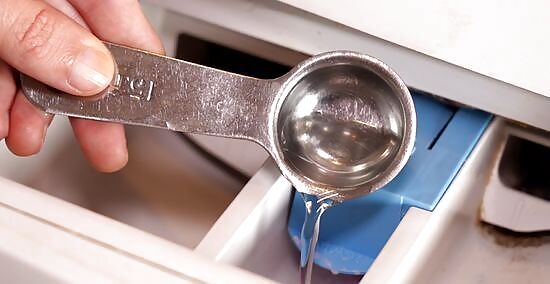
Load the washing machine and add bleach. Next, put your pre-treated white shirt (and any other whites you're washing) into your washing machine. At this point, you can add your bleach. The precise way you'll do this will vary based on the type of washing machine you have — directions for the most common types are below: Machines with bleach dispenser: Pour bleach into the bleach dispenser tray, filling it to the indicated line. The washing machine will automatically release the bleach into the load at the appropriate time. Machines without bleach dispenser: Start the wash cycle, then add detergent and 1/2 cup of bleach to the water, then, finally, add your clothing. Very large machines: Use bleach dispenser as above if available. If the machine has no bleach dispenser, add 1 cup of bleach to the water after the wash cycle has begun.
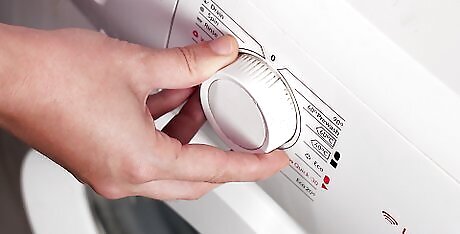
Run the washer at the highest allowable heat. You're all ready to start your washing machine! For the greatest cleaning and whitening power, use the hottest temperature setting allowable for the fabric of the garments in the wash. Consult your garment's care label if you are unsure of how hot it can safely be washed — in general, tough fabrics like cotton, denim, and so on can take hot wash temperatures, while many more fragile or manmade fibers can only withstand warm heats.
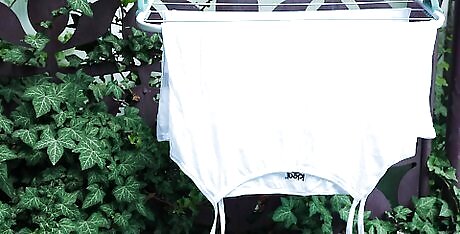
Dry and repeat as needed. When your washing machine is done, remove your white shirt and any other whites you washed with it. Dry as you please — for most, this will usually mean using a dryer, though you can also save energy by air-drying if it's sunny outside. For particularly stained or soiled white shirts, you may need to repeat this cycle several times to restore them to their original brilliant white. For the very best results, try pairing this normal washing technique with one of the others described in this article.
Sun-Bleaching White Shirts
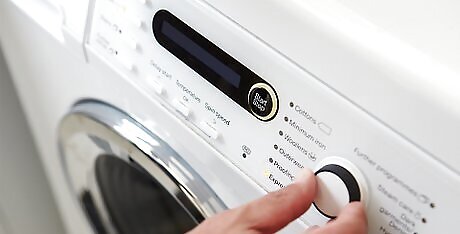
Wash as normal. For this method, you'll use the natural bleaching power of the sun's rays to get your shirt looking as white as possible. Before bleach was commercially available, this was the primary way that people kept their whites bright and shining. To begin, wash your white shirt as you normally would. You can use one of the methods described above or simply use whatever washing technique you're used to.
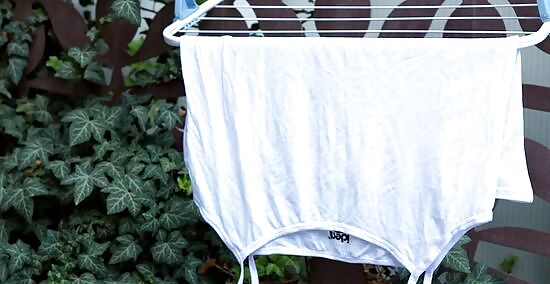
Hang clothes outside in warm weather. Next, if the sun is shining and there's no chance of rain, take your wet clothes outside. Hang the shirt over a horizontal wire or a wooden drying rack. If you don't have either of these things handy, you can try laying it on a clean, flat surface, like the floor of a deck or patio, or hanging it over a railing. Try to position the shirt somewhere will it will get plenty of sun — the more, the better.
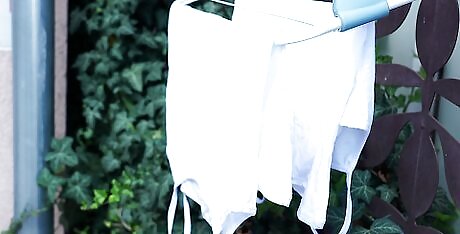
Wait for the clothes to dry. Now, all you've got to do is wait! Over time, the sun will do its work, naturally evaporating the moisture trapped in the fabric. As it does this, the sun will also gently bleach the fabric itself, resulting in noticeably whiter whites without the aid of commercial bleach. This method is great for cloth diapers and other sorts of frequently-soiled white fabrics. The bleaching power of the sun comes from the ultraviolet radiation in its rays. This radiation can actually break up the chemical bonds that produce the colors in stains at a molecular level, causing them to "fade" or lighten in color.
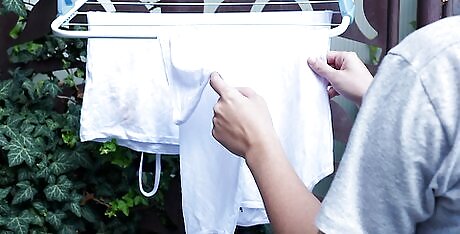
Don't let clothes lay in the sun for days on end. While sun-bleaching offers an easy, convenient alternative to commercial bleach, it has its drawbacks as well. Over time, the sun's rays can actually weaken clothing fabric, making it much more susceptible to damage and wear. For this reason, you'll want to avoid leaving clothes out in the sun longer than they need to be. Once your whites have dried, to avoid unnecessary wear, bring them in, rather than letting them sit out.
Using Laundry Bleach Safely

Use bleach only for whites. In general, bleach should only be used for white pieces of clothing. Though it's great for brightening your whites, bleach can lead to laundry disasters when used with certain types of colored clothing. Bleach can strip the dye straight out of colored clothing, leaving you with pale, faded results. Worse still, if undiluted bleach is spilled directly onto colored clothing, it can result in splotchy, uneven faded patches in the spots where the bleach hits the shirt. For these reasons, you'll want to keep most colored clothing far away from bleach. To be clear, there are actually two different kinds of bleach that are commonly available: chlorine bleach, which is suitable only for whites for the reasons listed above, and oxygen bleach, which is usually marketed as a cleaning product with "Oxi" in the name (e.g., Oxiclean, etc.). In some situations, you can use oxygen bleach for treating stains on colored clothing. However, since chlorine bleach is usually what most people think of when they hear the word "bleach", we've focused on this in the safety disclaimer above.
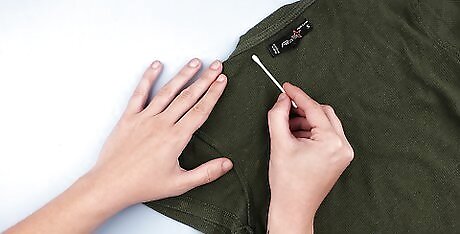
Test for colorfastness on an inside seam. While chlorine bleach usually isn't recommended for cleaning colored clothing, oxygen bleach can usually be safely used in small quantities for "colorfast" clothing — that is, clothes with colors that won't run. Sometimes, this information will be contained on the garment's care label. If it isn't, you can test a garment's colorfastness by using the quick test below: Mix 1 tablespoon of oxygen bleach in 1 cup of water. Dip a cotton ball or swab in the mixture and transfer just a drop or so to one of the garment's inside seams (or some other part of the garment that isn't likely to be seen). Wait for about 10 minutes, then check to see if the colors have faded. If they have, don't use the bleach to clean the garment.
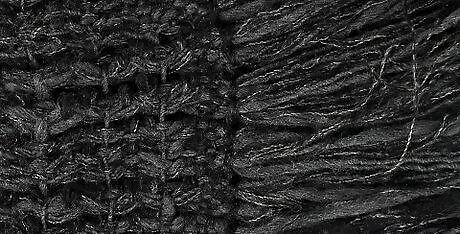
Don't use bleach for wool, mohair, leather, silk, or spandex. Bleach is a powerful cleaning tool — though it can get your whites looking brand-new, it can damage weaker fabrics. In general, you won't want to use bleach on any sort of garment made from the materials listed above for this reason. Bleach can sometimes ruin or seriously discolor garments made from these fabrics. If you're washing white versions of these fabrics (i.e., white wool, white mohair, and so on), you'll usually be directed to use hydrogen peroxide or another mild bleaching agent rather than bleach. When in doubt, consult a garment's care label. The list above isn't exhaustive, so, if you're ever not 100% sure whether or not you should use bleach to wash a garment, give the label a quick check.

Don't mix bleach and ammonia. As noted above, you'll never, ever, ever want to mix bleach and ammonia for any cleaning job. These two common cleaning materials can be very harmful when combined, forming dangerous chloramine gases that can injure (or, if you're continuously exposed to them, even kill you). Chloramine gases are not something you want in your home, so keep ammonia far away from your bleach. Below are just some of the effects of exposure to chloramine gas: Coughing Chest pain Pneumonia Mouth, eye, and throat irritation Nausea Shortness of breath















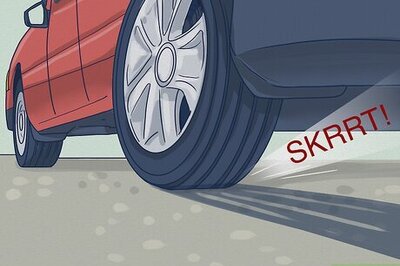
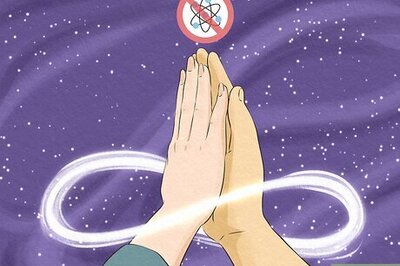

Comments
0 comment